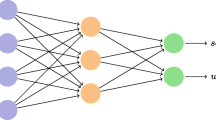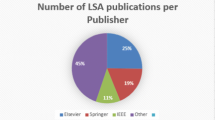Abstract
Sequence planning generation is an important problem in assembly line design. A good assembly sequence can help to reduce the cost and time of the manufacturing process. This paper focuses on assembly sequence planning (ASP) known as a hard combinatorial optimization problem. Although the ASP problem has been tackled via even more sophisticated optimization techniques, these techniques are often inefficient for proposing feasible assembly sequences that satisfy the assembly planners’ preferences. This paper presents an approach that makes easier to check the validity of operations in assembly process. It is based on a model of the assembly planners’ preferences by means of strategic constraints. It helps to check a priori the consistency of the assembly constraints (strategic and operative constraints) given by the assembly system designers before and while running an assembly plan generation algorithm. This approach reduces the solution space significantly. A case study is presented to demonstrate the relevance of the proposed approach.
Similar content being viewed by others
References
Bai YW, Chen ZN, Bin HZ, Hun J (2005) An effective integration approach toward assembly sequence planning and evaluation. Int J Adv Manuf Technol 27(1–2):96–105
Bonneville F, Perrard C, Henrioud J-M (1995) A genetic algorithm to generate and evaluate assembly plans. Proc ETFA '95, INRIA/IEEE Symposium on Emerging Technologies and Factory Automation, Paris, France, 10–13 Oct, 2:231–239
Chang L, Liu H, Gu TL, Wei L (2011) Product assembly sequence planning based on heuristic DCPM-FGA. Comp Integ Manufact Syst 17(2):239–247
Choi Y-K, Lee D-M, Cho Y-B (2009) An approach to multi-criteria assembly sequence planning using genetic algorithms. Int J Adv Manuf Technol 42(1–2):180–188
Delchambre A (1992) Computer-aided assembly planning. Chapman & Hall, London. Book ISBN 041243170X
Demoly F, Yan XT, Eynard B, Rivest L, Gomes S (2011) An assembly oriented design framework for product structure engineering and assembly sequence planning. Robot Comput Integr Manuf 27(1):33–46
Gao L, Qian W, Li X, Wang J (2010) Application of memetic algorithm in assembly sequence planning. Int J Adv Manuf Technol 49(9–12):1175–1184
Gottipolu R, Ghosh K (2003) A simplified and efficient representation for evaluation and selection of assembly sequences. Comput Ind 50:251–264
Gu T, Xu Z, Yang Z (2008) Symbolic OBDD representations for mechanical assembly sequences. Comput Aided Des 40:411–421
Henrioud J-M (1989) Contribution à la conceptualisation de l'assemblage automatisé: nouvelle approche en vue de la détermination des processus d'assemblage. Thèse d'Etat, University of Franche-Comte (France)
Henrioud J-M, Bourjault A (1991) LEGA: a computer-aided generator for assembly plans (Chapter 8). In: Homem De Mello L-S, Lee S (eds) Computer aided mechanical assembly planning (Series: The Springer International Series in Engineering and Computer Science). Springer, New York. Vol. 148, p. 464, ISBN: 978-0-7923-9205-7
Henrioud J-M, Relange L, Perrard C (2003) Assembly sequences, assembly constraints, precedence graphs. Proc IEEE International Symposium on Assembly and Task Planning, 10–11 July, 90–95 (ISBN: 0-7803-7770-2)
Homem De Mello L-S, Lee S (1991) Computer aided mechanical assembly planning. (Series: The Springer International Series in Engineering and Computer Science). Springer, New York. Vol. 148. Hardcover, p. 464, ISBN: 978-0-7923-9205-7
Hsu YY, Tai PH, Wang MW, Chen WC (2011) A knowledge-based engineering system for assembly sequence planning. Int J Adv Manuf Technol 55(5):763–782. doi:10.1007/s00170-010-3093-5
Hui W, Dong X, Guanghong D, Linxuan Z (2007) Assembly planning based on semantic modeling approach. Comput Ind 58:227–239
Jiménez P (2013) Survey on assembly sequencing: a combinatorial and geometrical perspective. J Intell Manuf 24(2):235–250. doi:10.1007/s10845-011-0578-5
Lazzerini B, Marcelloni F (2000) A genetic algorithm for generating optimal assembly plans. Artif Intell Eng 14(4):319–329
Lee S (1994) Subassembly identification and evaluation for assembly planning. IEEE Trans Syst, Man Cybern 24(3):493–503
De Lit P, Latinne P, Rekiek B, Delchambre A (2001) An ordering genetic algorithm for assembly planning. Int J Prod Res 39(16):3623–3640
Liu YY, Gang Z, Bin Bin W, Guang RY (2011) Assembly sequence planning for aircraft component based on improved clashes matrix. Appl Mech Mater 88–89:22–28
Lv H-G, Lu C (2010) An assembly sequence planning approach with a discrete particle swarm optimization algorithm. Int J Adv Manuf Technol 50(5–8):761–770
Marian R, Luong L, Abhary K (2003) Assembly sequence planning and optimisation using genetic algorithms—part I. Automatic generation of feasible assembly sequences. Appl Soft Comput 2(3F):223–253
Martinez M, Pham V-H, Favrel J (2009) Optimal assembly plan generation: a simplifying approach. J Intell Manuf 20(1):15–27
Mascle C (2001) Disassembly–assembly sequencing using feature-based life-cycle model ; Proceedings of the IEEE International Symposium on Assembly and Task Planning, pp 31–36
Pan H, Wen WH, Li TM (2010) Genetic algorithm for assembly sequences planning based on heuristic assembly knowledge. Appl Mech Mater 44–47:3657–3661
Perrard C, Lutz P, Salgueiro P (2007) New bottom-up algorithm for assembly plan generation: opportunities for micro-factory design. Proc IEEE International Symposium on Assembly and Manufacturing, ISAM’07, 22–25 July, p. 276–281
Perrard C, Bonjour E (2012) A priori checking inconsistencies among strategic constraints for assembly plan generation. Int J Adv Manuf Technol 63(5–8):817–838. doi:10.1007/s00170-012-3942-5
Rashid M, Hutabarat W, Tiwari A (2012) A review on assembly sequence planning and assembly line balancing optimisation using soft computing approaches. Int J Adv Manuf Technol. doi 10.1007/s00170-011-3499-8
Shuang BS, Jiapin C, Zhenbo L (2008) Microrobot based micro-assembly sequence planning with hybrid ant colony algorithm. Int J Adv Manuf Technol 38(11):1227–1235
Wang JF, Liu JH, Zhong YF (2005) A novel ant colony algorithm for assembly sequence planning. Int J Adv Manuf Technol 25(11–12):1137–1143
Wang L, Keshavarzmanesh S, Feng H-Y, Buchal R (2009) Assembly process planning and its future in collaborative manufacturing: a review. Int J Adv Manuf Technol 41(1–2):132–144
Wang Y, Liu JH (2010) Chaotic particle swarm optimization for assembly sequence planning. Robot Comput Integr Manuf 26(2):212–222
Wilson HW, Latombe JC (1994) Geometric reasoning about mechanical assembly. Artif Intell 71(2):371–396
Youhui L, Xinhua L, Qi L (2012) Assembly sequence planning based on ant colony algorithm. In: Future communication, computing, control and management, vol 141. Springer, Berlin, pp 397–404. ISBN: 978-3-642-27311-7
Zeng C, Gu T, Zhong Y, Cai G (2011) A multi-agent evolutionary algorithm for connector-based assembly sequence planning. Procedia Eng 15:3689–3693
Zhao S, Hong J, Zhao H, Li S, Ding L (2012) Research on assembly sequence planning method for large-scale assembly based on an integrated assembly model. Proc IME BJ Eng Manufact. doi:10.1177/0954405411429248
Author information
Authors and Affiliations
Corresponding author
Rights and permissions
About this article
Cite this article
Perrard, C., Bonjour, E. Unification of the a priori inconsistencies checking among assembly constraints in assembly sequence planning. Int J Adv Manuf Technol 69, 669–685 (2013). https://doi.org/10.1007/s00170-013-4885-1
Received:
Accepted:
Published:
Issue Date:
DOI: https://doi.org/10.1007/s00170-013-4885-1




